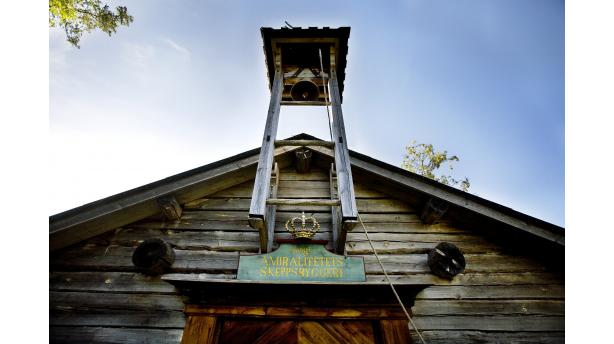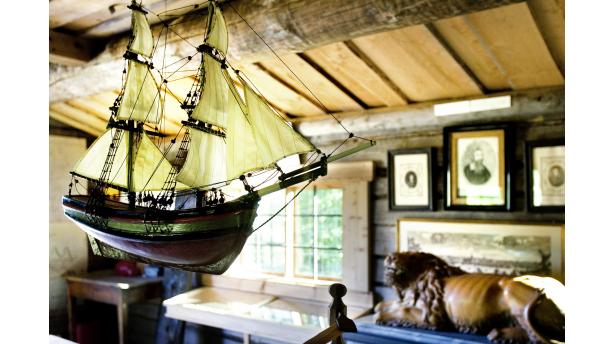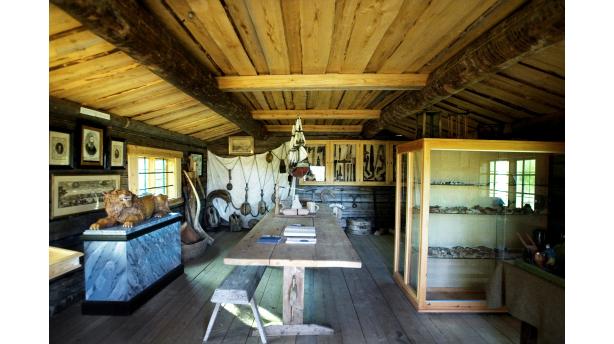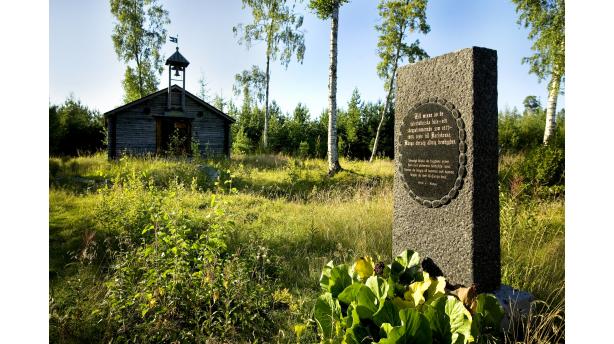Museum A-Ö » Rural life and craft » Cronoholmen Shipyard
Cronoholmen Shipyard




Did you know...
An archaeology event is organized on the Cronoholmen Shipyard every September, where for example plaiting of rope and other exciting programme is arranged.
In Jouxholmen about 8 km away from the centre of Kronoby are the remains of the Cronoholmen Shipyard. The Swedish Crown had a shipyard here at the end of the 17th century, and its vital activity employed the artisans of the region. The majority of vessels in Finland in the 17th century were manufactured in Ostrobothnia. Get acquainted in Jouxholmen with the history of the region, with 17th century shipbuilding and the everyday life and chores of ship carpenters.
The remains of the Cronoholmen Shipyard in Jouxholmen are among the best preserved shipyards in the whole of Finland. The shipyard was established in 1673 when provost Jacobus Brennerus was offered the opportunity to build a pinewood vessel instead of the oak vessel more typical for the period. The ship was approved and the favourable location of Cronoholmen, the abundance of timber and the expertise of the shipbuilders provided good conditions for a convenient shipbuilding location.During the years 1673-1704 there were over 60 vessels built in Jouxholmen and over 200 people at its peak employed. Instead of war vessels the ships built were cargo ships, that transported anchors, cannons, oak and troops between the different cities in Sweden. The biggest vessels, the three-masted Krejares, were over 100 feet (30 m) long.
The shipyard was especially important for the region in a financial sense. The peasants increased their craftmanship and the salaries were also good. The forest-owners sold timber, and the subcontractors of Jakobstad and Kokkola as well as the merchants of the region participated in the new trade. The shipyard even had an impact on folk art, and new influences were received from the Swedish craftsmen working on the yard.
Because of the skilled artisans of Kronoby, the region was granted a special license, by which the king was offered carpenters instead of the customary soldier, that every file of the parish was required to sustain. The boat and ship carpenters of Kronoby travelled to Sweden to the shipyard of the admiralty in Karlskrona in order to serve there, and many of them never returned to their home region.
The Cronoholmen shipyard was disbanded in 1704 partly due to upthrust, which reduced the possibilities of launching, and partly because the navy demanded stronger vessels made of oak. The restless times in the Finland of the early 18th century and the Great Northern War also had an impact on the matter. Shipbuilding in Jouxholmen was, however, continued for some time for the private market and the merchants after the shipbuilding for the Swedish Crown had ended.
The foundations of houses, the scum heaps and the cellar that have been preserved for modern days and other artefacts found on the region serve as evidence of the lively shipbuilding practiced on the district. On the museum area established in the mid-1990s can be seen a museum building, a smithy, a well, a large ship anchor and a monument. Shipbuilding in the 17th and 18th century is displayed in the museum with the help of diverse artefacts, archaeological findings, drawings, tools and scale models.



